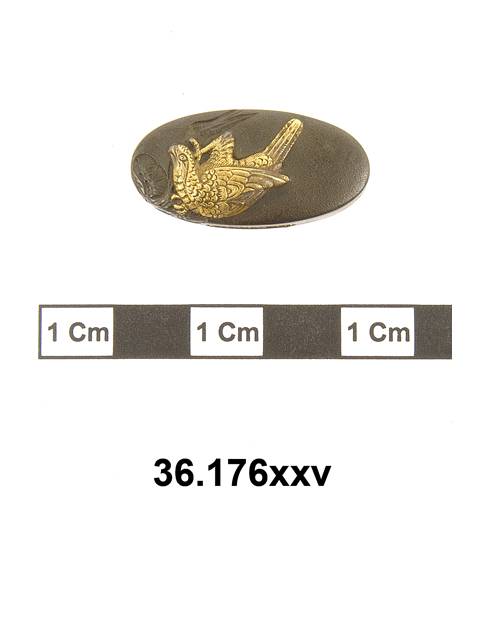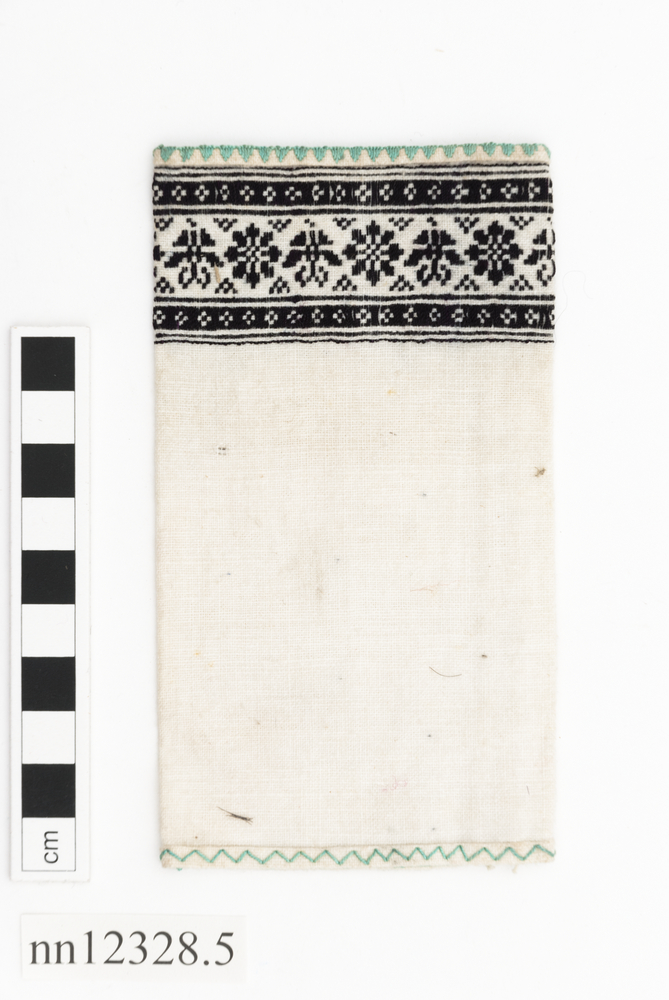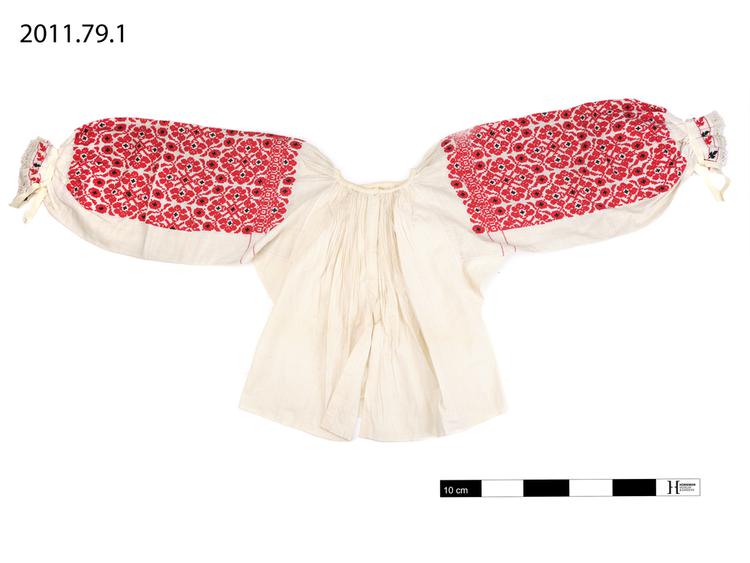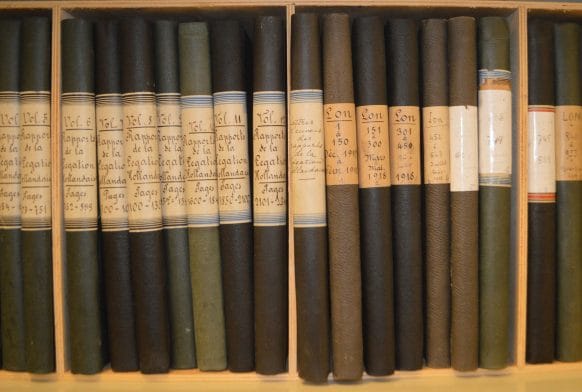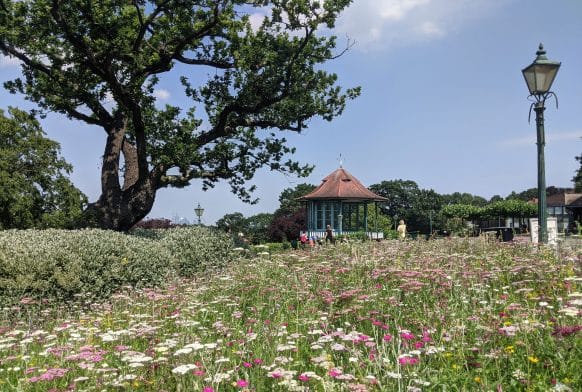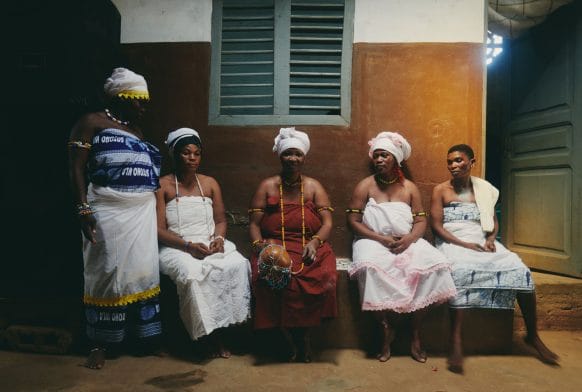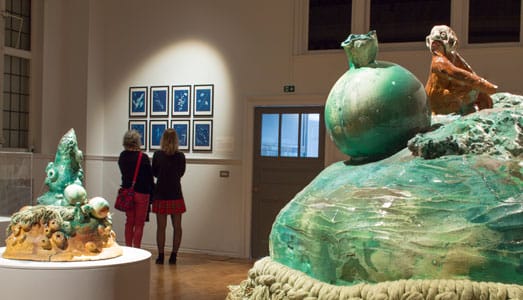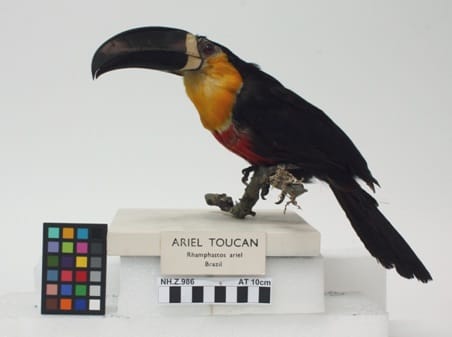Kenyan mask carved from wood in the shape of a face with elongated ear lobes and carved top design. Decorated with elephants and a leopard, which are incorporated into the design. Decorated with various patterns. Main colour black, with red, yellow and brown decoration.
High demand for tourist related objects, exotic artefacts and performances – themes of exploitation, dependence and resistance.
Multiple ethnic groups in Kenya (Mijikenda, Kisii, Maasai, Swahili,Kamba, Giriama) are involved in tourist trade.
The masks sold are Kenyan only in the sense that they were carved in Kenya. There is no record of any ethnic group in Kenya traditionally using masks for any religious or ceremonial purpose. None of the designs and styles of masks can be said to be in any way representative of traditional Kenyan cultures.
Mask designs are often based on photographs from magazines and that the basic shapes and sizes of masks were replications of original designs with addition of different colour combinations, etched patterns and other images.
Animals, and in particular the BIG FIVE are often represented in the masks to suit tourist need and represent Kenya.
The line between the authentic and the fabricated is not always clear to tourists. Sellers often make up stories about the use of masks in non-existent ceremonies to sell them to tourists. For example, one popular, but completely fabricated, story was that the masks represent, for the Kamba, the spirits of ancestors. For example, in finishing a carved wooden mask, Phillip’s head screwdriver points were often used to etch in marks resembling ceremonial scarification, a practice not performed by any of the ethnic groups in Kenya.




